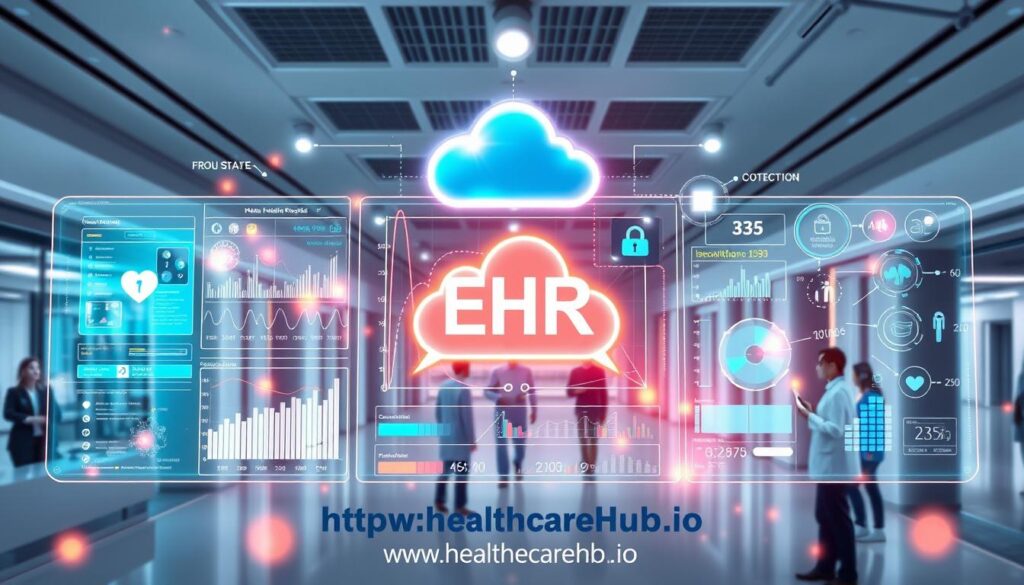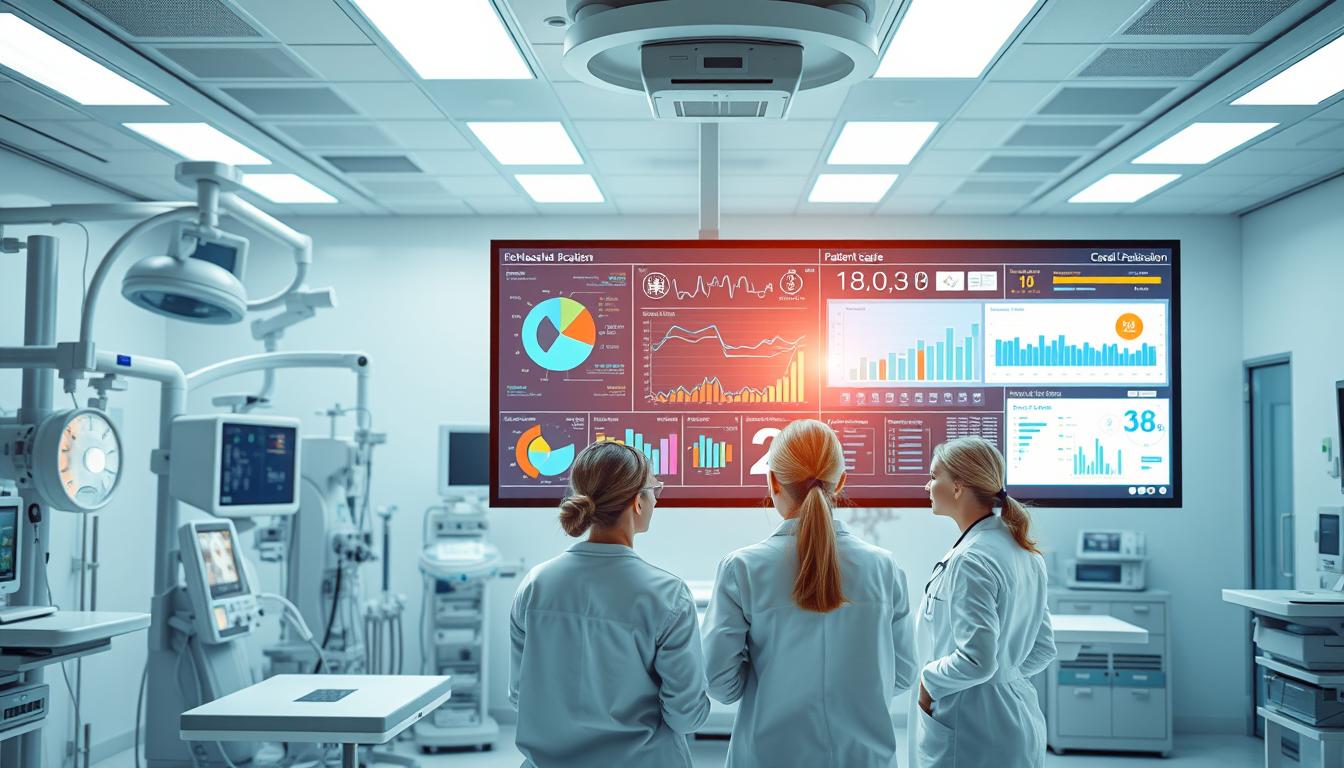We are at the start of a big change in healthcare, thanks to electronic health records (EHR) and EHR software. Digital medical records are changing how we care for patients. They make care more efficient, accurate, and focused on the patient.
EHR software and digital records are making healthcare better. They help doctors make quick, informed decisions. As we look into EHRs, we’ll see how they’re changing patient care in the U.S.
Introduction to EHR
Electronic health records are like digital versions of old paper charts. They hold a patient’s medical history, diagnoses, and treatment plans. EHR software makes it easy and safe to manage this data, helping doctors give better care.
Key Takeaways
- Electronic health records are digital versions of patient charts, providing real-time access to patient information.
- EHR software enables efficient management of patient data, improving clinical workflows and reducing errors.
- Digital medical records are a key feature of EHR systems, providing a complete and accurate record of a patient’s medical history.
- EHR systems are revolutionizing patient care, making it more efficient, accurate, and patient-centered.
- The adoption of EHR software is transforming the healthcare landscape, enabling healthcare providers to deliver high-quality care.
- Electronic health records are secure, accessible, and efficient, providing instant access to patient information.
Understanding Electronic Health Records (EHR) Systems
We will explore the main parts of EHR technology. We’ll talk about its key features and how it works. We’ll also cover the rules it must follow. Health tech is key in EHR systems, making sure health info is shared safely. Electronic medical records are at the heart of EHR systems, keeping a digital record of a patient’s health history.
EHR systems must follow rules like HIPAA to keep patient data safe. They aim to improve care by giving accurate and current health info. EHR systems have features like clinical support, electronic prescribing, and tools for patient engagement.
Core Components of EHR Technology
The main parts of EHR technology include electronic medical records. These keep a digital record of a patient’s health history. Other important parts are clinical decision support systems. These help healthcare professionals make better decisions.
Key Features and Functionality
Some important features of EHR systems are:
- Clinical decision support
- Electronic prescribing
- Patient engagement tools

Regulatory Compliance and Standards
EHR systems must follow rules like HIPAA. This ensures patient data stays safe and is available when needed. Health tech helps make sure this happens by securely sharing health info.
Implementing EHR Solutions in Healthcare Settings
Exploring electronic health records (EHR) shows us how key effective implementation is. It’s all about managing healthcare data well. We must plan and execute carefully to keep patient data accurate and up-to-date.
When we start using EHR solutions, workflow analysis is a must. We look at current workflows and see how EHRs can make things better. This helps healthcare providers adjust smoothly to the new system.
Important steps for a good EHR implementation include:
- Training staff to use the new system well
- Providing ongoing technical support
- Ensuring the system works well with others
By focusing on these, healthcare groups can make EHRs work well. This improves patient care and data management. 
In today’s digital world, managing healthcare data well is key. By carefully choosing and using EHR solutions, healthcare providers can offer better care. This is good for everyone involved.
Maximizing EHR Integration for Enhanced Patient Care
We know how vital electronic patient records are for patient-centered care. To get the most out of EHR integration, we need to focus on a few key areas. These include staff training, workflow optimization, and keeping patient data safe and private.
Health information technology is key to supporting EHR systems. By investing in strong health IT, healthcare providers can keep patient data safe and accessible. This helps them make better decisions and give top-notch care.
Staff Training and Adoption Strategies
For EHR integration to work well, training staff is a must. We need to give them in-depth training on EHR software. This way, they can use it smoothly and accurately, keeping patient data up-to-date.
Workflow Optimization Techniques
Optimizing workflows is also vital for EHR integration. We need to make sure EHR software fits into daily practice. This reduces paperwork and lets healthcare providers focus more on patient care.
By using these strategies, we can make EHR integration work better for patient care. Electronic patient records, EHR software, and health information technology are all important. With the right investment and training, patient data stays safe, accurate, and accessible.
Transforming Healthcare Through Digital Innovation
The healthcare world is changing fast, thanks to digital records. Electronic health records (EHR), digital medical records, and electronic medical records are leading this change. They promise better health outcomes, more patient involvement, and lower costs.
Healthcare providers can make their work easier and more precise with EHR systems. They can analyze data better and give care that’s tailored to each patient. This makes care more personal and effective.
Looking ahead, making data shareable and integrating it will be key. This will help healthcare teams make better decisions and see the big picture of a patient’s health. Also, using artificial intelligence and machine learning in EHRs can spot trends and help prevent problems.
In the world of value-based care, digital records are even more important. They help healthcare providers change how they care for patients. This lets patients play a bigger role in their health. The future of healthcare is looking very promising.











Leave a Reply